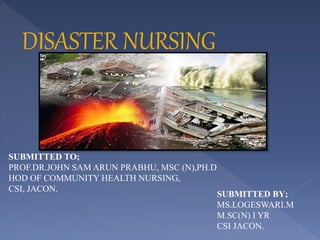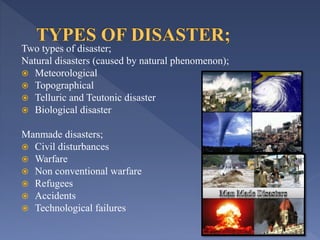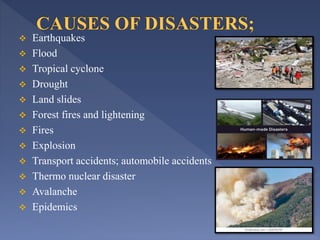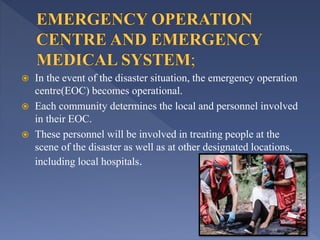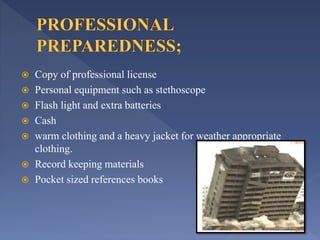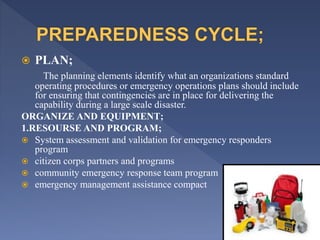Disaster nursing involves adapting professional nursing skills to meet physical, emotional, and nursing needs resulting from disasters. The goals are to achieve the best possible health levels for affected communities and meet basic survival needs. Disaster nursing requires assessing risks and resources, correcting unequal access to care, and promoting quality of life for survivors. Effective disaster nursing requires planning, organizing resources, training, conducting exercises to evaluate response, and continually improving processes.
